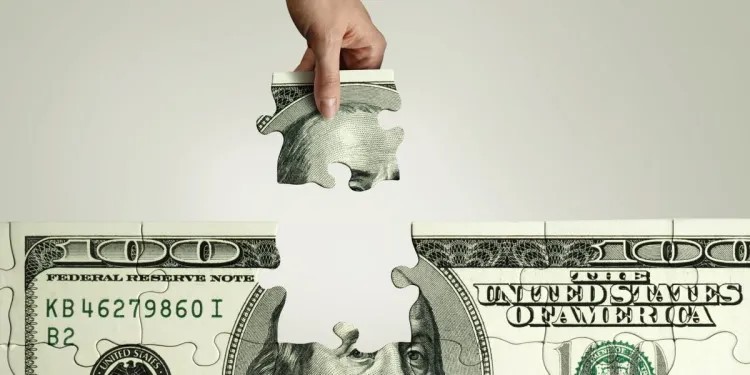 |
| The position of the US dollar is increasingly at risk. Illustration photo. (Source: biz.crast.net) |
There are emerging alternatives that, while still relatively young, “promise” the possibility of one day taking the power away from the dollar and establishing a less centralized monetary regime.
“Over the next decade or two, there is a high probability of the emergence of dominant regional currencies and the formation of a multipolar international regime, in which the role of the USD is shared with the EUR, the RMB, future central bank digital currencies (CBDCs) and possibly other options that we have not yet seen,” noted economist Vikram Rai.
Safe Haven Properties of the USD
The US dollar continues to dominate as the world’s reserve currency, a trend that has not changed since World War II, Rai said. The greenback accounts for 50% of the world ’s trade invoicing and is the main asset for cross-border banking and bond issuance.
However, while the US is still benefiting from these characteristics, there is also growing frustration about the dollar's supremacy, he noted.
Like other analysts, Mr. Rai said that the reason was partly due to the West's decision to freeze Russia's currency reserves since the country carried out a special military operation in Ukraine last year.
Since then, central banks around the world have been filling their reserves with gold to reduce their exposure to the US dollar. China has promoted the use of the yuan in some global trade deals, such as with Brazil, India and Russia.
Mr. Rai also noted China's efforts to use the yuan to trade crude oil, eliminating its long-standing dependence on the US dollar in the commodity market.
“The challenge now is huge for the ‘petrodollar’ both economically and symbolically – the convention by Saudi Arabia and other OPEC exporters on pricing crude exports has supported demand for USD as every country trades in the crude market and therefore needs to hold them,” he said.
However, it will take time for the dollar to be completely dethroned. While the euro is the greenback’s other major rival, both the euro and the yuan are less reliable competitors to the dollar. Euro bonds are often not issued by the same government as U.S. bonds, which reduces their reliability.
According to the expert, the yuan is neither freely convertible nor widely used. Other analysts say that it is weakened by tight controls, making it less suitable for free market flows.
Factors accelerating de-dollarization
However, there are still some factors that could accelerate the de-dollarization process. Central bank digital currencies (CBDCs) are one such threat, with several countries already researching the technology. If adopted, such factors could eliminate the need for the US dollar to settle payments.
There are also troubling events that threaten the dollar. “Although the recent US debt default was averted, similar developments in the future could shake international confidence in the currency and accelerate its decline,” Rai said.
Other challenges may emerge in the coming years, such as the idea of a common currency among the BRICS countries (Brazil, Russia, India, China, South Africa).
“A formal monetary union between such disparate economies is unlikely to come to fruition, but these kinds of events signal a commitment to doing much of the bloc’s trade and finance without the dollar,” Rai said.
Source




































































![[Photo] National Assembly Chairman Tran Thanh Man receives Chairman of Morocco-Vietnam Friendship Association](https://vphoto.vietnam.vn/thumb/402x226/vietnam/resource/IMAGE/2025/7/26/b5fb486562044db9a5e95efb6dc6a263)

































Comment (0)